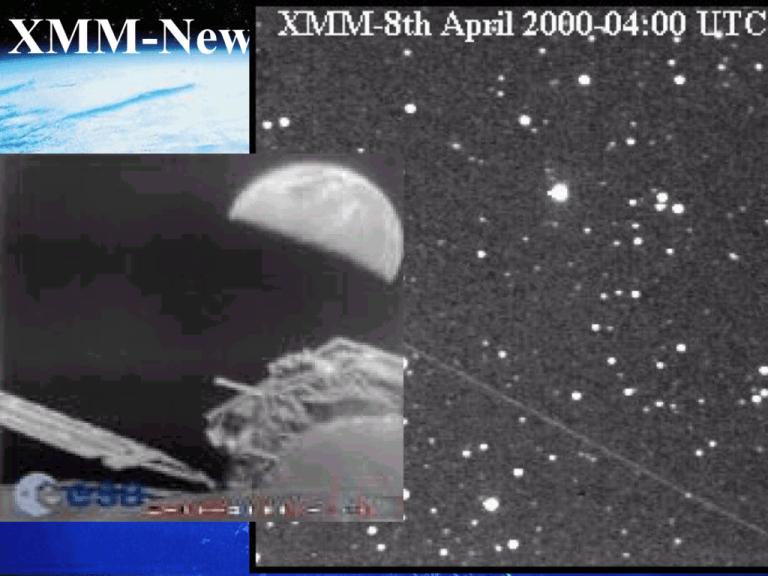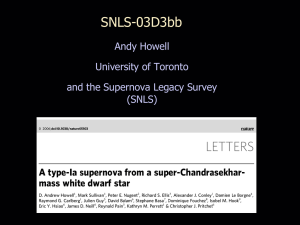Transparencies
advertisement

XMM-Newton contribution 1E1207-52 EPIC 230 ksec 1 st direct measurent of the magnetic field of an isolated neutron star (where cyclotron absorption is taking place) 1.4 keV 0.7 keV 2.1 keV 2.8 keV Conclusions 10 For electrons: <B> 8 10 G 14 for protons : <B> 1.6 10 G PROBLEM pdot:(1.4 ± 0.3) 10-14 s/s implies B= 2-3 1012 but also an age of 5 105 y versus the SN age ( circa 104 ys) Geminga EPIC 100 ksec MOS Energetics Edot 3 1034 erg/sec D = 160 pc m=170 mas/y vtr =120 km/sec Geminga luminosity 3 1031 erg/sec (0.1-5 keV) Tails luminosity 6.8 1028 erg/sec The tails account for 2 10-6 Edot E 2 V ISM NS 2 4RSO c V =mD/cos(i) NS from bow-shock E 2 V ISM NS 2 4RSO c VNS=mD/cos(i) we can obtain 0.06 < ISM < 0.15 at/cm3 which implies 7 < M < 20 What produces the X-rays Power law spectrum -> synchrotron radiation -> need for electrons and magnetic field From bow-shock theory shock = 4 ISM Since B is frozen-in Bshock = 4 BISM Bshock = 10-5 G To produce keV photons in 10-5 G B field one needs 1014 eV electrons 1014 eV electrons will have a Larmor radius of 3.4 1016 cm thickness 6.8 1016 cm 27” Caraveo et al. 2003 Science 301, 1345 1014 eV electrons will lose half of their energy in 800 y . 180 “ / 170 mas/y = 1,000 y Time-averaged spectroscopy Pn data ~ 53,000 photons Timing analysis Gamma peaks Common minimum Phase-resolved spectroscopy Phase-resolved spectroscopy Caraveo et al, 2004 Science 305,376 Phase-resolved emission (160 pc) Conclusions -hot spot ( ~1.9 M °K), radius 0-60 m rotating Probably polar cap seen at 70°-80° inclination cosq x R (RW/c)1/2 (~300m) luminosity 1.5 1029 erg/sec -Cool black-body ( ~.48 M °K), Eurasia size luminosity 2.6 1031 erg/sec -Power law photon index 1.7 ± 0.1 luminosity 7.7 1029 erg/sec Is Geminga unique? EPIC view of PSRs B1055 & B0656 1055-52 MOS 83 ksec 0656+14 MOS 40 ksec pn 60 ksec 85,000 photons pn 35 ksec 120,000 photons Phase-averaged spectra Geminga They all show phase spectral variations 0656 1055 1055-58 Geminga 0656+14 0656 Cool bb: is it the surface of the NS? problem 1055-58 Hot bb: Geminga rotator inclinations? 0656+14 0656 hot spot(s) sizes? Hot bb: heated polar cap(s) ? their dimensions are vastly different although they should not !!! theoretical cap radii ~250-320 m real EPIC radii: 60, 800, 1500 m






